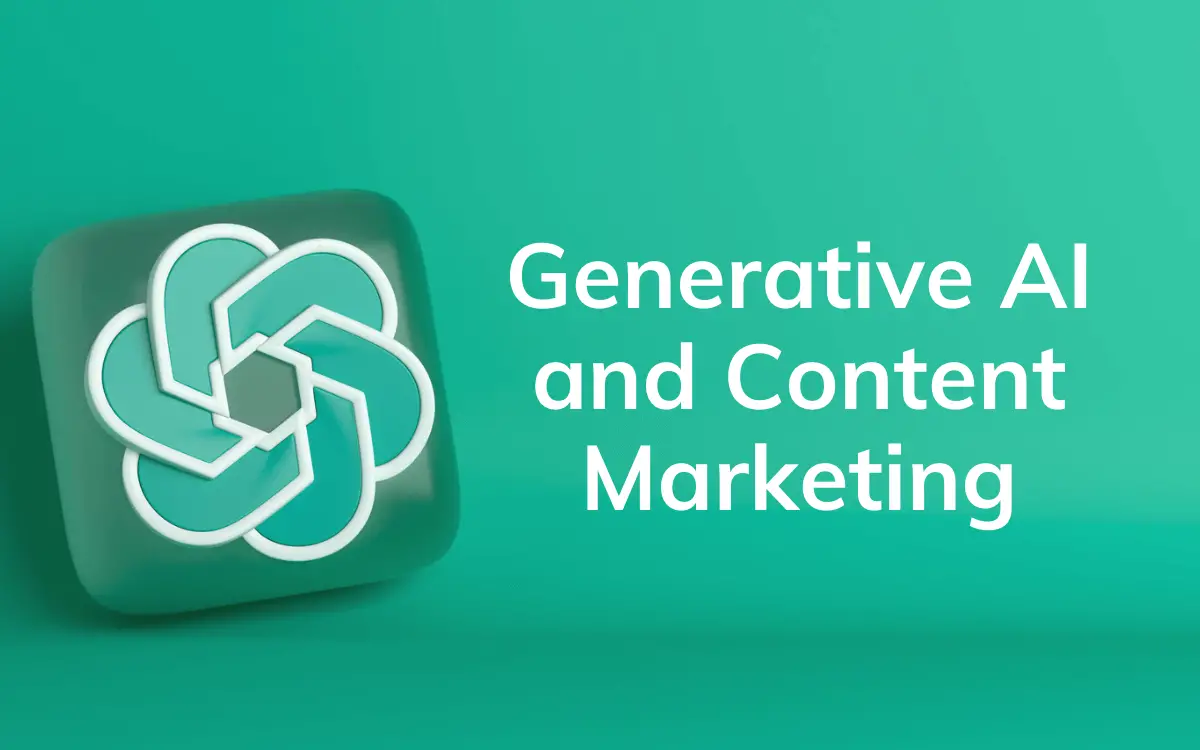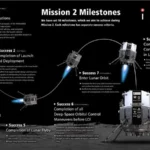From Quick Wins to Total Transformation – How Gen AI is Reshaping Customer Engagement, Innovation, and Campaign Personalization.
the-cma
Imagine a world where marketers have no creative constraints. A world where they can make the right offer at the right time for the right person—in a communication that feels like a cohesive whole, rather than like some disjointed Mad Libs concoction. A world where efficiency gains from automation and automated-content generation go hand in hand with increased customer insights. A world where customers save time and effort finding and accessing the goods and services they want and need. A world where marketers can better meet and deliver customer value and focus on innovation.
Generative AI (gen AI) brings this holy grail of hyperpersonalization at scale close to reality.
Gen AI is making it possible to revolutionize consumer marketing as we currently know it. At an individual-company level, marketing campaigns that once required months of content design, insight generation, and customer targeting can be rolled out in weeks or even days, often with at-scale personalization and automated testing. Website development and customer service tasks are too often the bottlenecks in interactions with individual consumers. But when executed well, they can induce greater engagement and improve satisfaction. Marketers can simultaneously analyze and interpret text, image, and video data to better understand innovation opportunities. Gen AI is powering granular personalization in ways that just weren’t possible before.
These productivity gains from gen AI are beginning to ripple across the global economic marketplace. A recent McKinsey report estimates that gen AI could contribute up to $4.4 trillion in annual global productivity. According to the analysis, marketing and sales is one of four functional groups that combined could reap an estimated 75 percent of that value.1 The productivity of marketing alone due to gen AI could increase between 5 and 15 percent of total marketing spend, worth about $463 billion annually.
Change is coming, and companies that sit on the sidelines risk being left behind.
In this article, we explore three ways consumer companies can create value with gen AI (exhibit). Companies are already wading into this new world by exploiting existing gen AI models that are publicly available. The next step for them will be to differentiate themselves, propelling unequaled customization and greater capabilities by integrating those models with their own data and systems. Finally, we look at the long-term opportunities for companies that want to push even further by reinventing their end-to-end processes with gen AI.

Getting Started with Gen AI in marketing
Current uses of gen AI in marketing mostly consist of off-the-shelf pilots integrated into existing workflows. These efforts are delivering immediate value by helping companies generate copy and images in less time, personalize campaigns, and respond to and learn from customer feedback. But they are also helping companies learn about gen AI, build the capabilities they’ll need to take advantage of it in deeper ways, and free up valuable employees for higher-level tasks. That’s one of the attractions of gen AI: as the following examples show, it has the potential to deliver value quickly, unlike other technologies that reward companies only after years of investment.
- Personalization of marketing campaigns. Crafts retailer Michaels Stores, for example, is using gen AI as part of its approach to deepen customer engagement through more personalized and frequent interactions with its shoppers. The company built a content generation and decision-making platform to help with copy development and to better understand how customer segments engage with different messages. Michaels has gone from personalizing 20 percent of its email campaigns to personalizing 95 percent. This has lifted the click-through rate for SMS campaigns by 41 percent and email campaigns by 25 percent.
- Unstructured customer data analysis. Hyperpersonalization efforts also benefit from more granular analyses of consumer behavior, which can be augmented by gen AI. Personal-clothing service Stitch Fix, for example, uses gen AI to help stylists interpret customer feedback and provide product recommendations. Instacart is using gen AI to offer customers recipes and meal-planning ideas and to generate shopping lists.
- Process automation. Marketers have always played a core integrating role across enterprises. Unsurprisingly, we are seeing opportunities for companies to automate interactions between marketing and other functions (for example, service, sales, product development, R&D, and legal reviews). One direct-to-consumer retailer, for instance, is using gen AI to help resolve customer tickets, such as order-taking or repair requests. By using gen AI to automate process steps (for example, retrieving information at the back end, making necessary changes, and replying to customers in the brand’s voice), the company has seen a more than 80 percent decrease in time to first response and a four-minute reduction in average time to resolve a ticket. The use of gen AI has also given the company’s customer support team more time to focus on higher-level customer interactions. In addition, there are significant opportunities to streamline the creation of multiversion, long-lead-time marketing assets, such as media plans, quarterly reviews, strategic plans, and meeting agendas.
- Opportunity identification and idea generation. Marketers are using gen AI to analyze competitor moves, assess consumer sentiment, and test new product opportunities. Rapid generation of response-ready product concepts can improve the efficiency of successful products, increase testing accuracy, and accelerate time to market. Mattel, for instance, is using AI in Hot Wheels product development to generate four times as many product concept images as before, inspiring new features and designs. Kellogg’s is scanning trending recipes that incorporate (or could incorporate) breakfast cereal and using the resulting data to launch social campaigns around creative and relevant recipes. And L’Oréal is analyzing millions of online comments, images, and videos to identify potential product innovation opportunities.
As companies start exploring opportunities with gen AI, they will want to ensure that whatever efforts they launch are in keeping with their overall marketing goals. Attempting to incorporate too many different gen AI initiatives in the hope that something sticks can end up being costly, diffuse, and difficult to track, making it hard to incorporate whatever lessons are generated across the launches. Instead, companies can focus on two or three use cases wherein off-the-shelf gen AI tools can provide immediate impact in priority domains.
Throughout the process of applying and adopting gen AI, marketers need to ensure that measures are in place to mitigate risks such as “hallucinations” (when gen AI produces confident-sounding outputs that are not grounded in verifiable facts, data, or algorithmic patterns), biases, data privacy violations, and copyright infringement. Gen AI is typically not well suited for high-stakes decision making, regulated environments, or applications that involve a heavy volume of requests or numerical reasoning. We’ve found that establishing an accountable leader, as well as a technology oversight board, are important first steps. Other guardrails may include working in a level of human review for anything going directly to a customer or limiting the kinds of topics that gen AI can address for marketing campaigns.
Customized Gen AI for Marketing
Lots of companies have started developing use cases like the ones listed above. However, companies seeking to truly differentiate themselves are going further. They are creating unique, customized solutions for customers by adapting off-the-shelf models that are trained on smaller, task-specific data sets. This is when companies can start to see exponential improvements in customizing everything for customers from campaigns to products. When companies start reshaping existing gen AI models with their own data and for their own highly specific needs, the results can be profound.
In the world of marketing, fine-tuning an existing gen AI model might mean training an open-source model with proprietary data (for example, brand guidelines or historical-marketing-campaign creatives) to generate bespoke content. This kind of semicustom gen AI solution can be regularly updated with new company data and ongoing learning. The result is a continually improving, bespoke gen AI solution that helps increase a company’s competitive advantage as it develops.
We are already seeing companies experiment with gen AI in high-priority use cases. Here are two examples:
Hyperlocal Outreach
One European telecommunications company used gen AI to shift from highly manual, blunt customer outreach messaging to messaging that would more effectively engage with specific segments. Previously, this telco deployed messages to just four macrosegments. With a lean operation, it was constrained by its ability to create copy. And often, the messaging that was produced didn’t resonate with the recipients. For example, messages sent to customers that were not in the customers’ native dialect (the country this telco operates in has several dialects) had particularly low conversion rates.
The telco built a gen-AI-based engine to create hyperpersonalized messaging for 150 specific segments. The engine trained on non-personally-identifiable information data to tailor communications to each segment’s demographic, region, dialect, and other attributes. The information was passed to GPT-4 and Dall-E to create copy and imagery, which were then ported into the email service provider via API and prepared for deployment. Next-best-action machine learning models then recommended the optimal product, marketing channel, and timing for each customer’s communications. With appropriate guardrails and governance protocols (in this case, full human involvement and review at all steps to explicitly limit the number of versions and degree of personalization) to address risk, ethics, and privacy requirements, these communications were deployed at scale. The result was a 40 percent lift in response rates, as well as a 25 percent reduction in deployment costs.
Innovation in Product, Creative, and Experience development
An Asian beverage company was looking to enter the EU market more quickly than it might have taken with traditional innovation and marketing approaches. Historically, the company could spend an entire year coming up with a new product concept for a new market. It turned to gen AI to help answer two questions: what kinds of new beverages might appeal to European customers and drive growth, and what innovative methods might speed up the product innovation process from end to end.
The beverage company first used ChatGPT to provide user insights by feeding it aggregate, nonconfidential customer information and then asked questions about flavor trends to generate a baseline understanding of beverage consumption and consumer behavior in the EU market. This process took a day, whereas this kind of market research typically takes up to a week. The marketing team then deepened those insights by layering on top more traditional research methods, such as ethnographies and digital diaries.
Researchers and designers also turned to gen AI to refine product concepts. In the world of product design, it often takes an industrial designer up to seven to ten days to develop a single high-fidelity beverage concept that encapsulates form, flavor, and packaging. Using a text-to-image gen AI tool, the company was able to produce 30 high-fidelity beverage concepts with detailed imagery in a single day. Marketers then took these concepts into the field to perform rapid testing with customers. Because the gen AI concepts felt real, the marketers were able to collect solid feedback in this early stage about what to explore further. Ultimately, gen AI helped the beverage company complete a yearlong process in just one month.
Transforming Marketing with Gen AI
In addition to using off-the-shelf marketing tools and customized solutions, companies may want to consider what a marketing function transformed by gen AI would look like in the long run. In this transformed future, nearly all marketing tasks could be assisted by gen AI: for example, if marketers need to write copy, they could begin with a draft written by gen AI. If marketers need to do research, they could start by asking gen AI for democratically sourced inputs. But while the future marketing function has the potential to be more innovative with gen AI, there must be guardrails to ensure that personally identifiable information isn’t exposed, copyrighted materials aren’t used improperly, and other risks are mitigated.
A marketing future enabled by gen AI will also aim for unique, marquee customer experiences that dramatically propel growth. These could include a hyperrelevant email marketing campaign with tens of thousands of bespoke customer experiences, a chatbot for a cosmetics company that asks customers about their goals and creates a customized beauty routine, or generated meal plans tailored to a family’s eating habits and food restrictions. This future involves customer-facing use cases that take real effort to envision, build, and design.
While we’re still in early days and no one is exactly sure what the future of gen AI will look like, we know that a gen-AI-based transformation is coming. Here’s how companies can get started so they aren’t left behind:
- Create a North Star vision and road map. Based on each company’s unique context, marketers can start by creating a vision of a marketing future enabled by gen AI, when the technology can address time-, cost-, and resource-intensive tasks. This mission should factor in the guiding principles for the organization, including responsible AI. From there, marketers can build a plan of where to invest (based on their company’s unique capabilities, competitive set, and customer needs) and what to build. Marketing leaders should make sure that the company is coordinated from the top down about which use cases to prioritize. The road map should include a learning and training pathway for employees, as well as an organization-wide internal-communications plan to ensure that everyone is moving in the same direction.
- Build the team to get it done. Companies can develop a three-layered team to help ensure a successful gen AI strategy. The first layer should consist of an action office that owns and coordinates the strategy and execution of initiatives. The second layer should be made up of cross-functional pods that build and roll out individual use cases. Finally, the third layer should be a technical foundation team that ensures a stable, secure platform for use cases to build upon.
- Get some quick wins going. For prioritized, low-complexity use cases where off-the-shelf gen AI tools can be applied, initiate a few efforts to learn and identify where gen AI can deliver the most value, what talent and skills are needed to sustain this capability, and what the operating model requirements to scale effectively are. A design brief could spell out the user value proposition and use case, and a build plan could list tech requirements, prototypes, and “build, buy, or partner” decisions.
Leaders in gen AI marketing can also start building high-value use cases. These are often complex and are likely to require the fine-tuning of gen AI foundation models (as opposed to tweaking an off-the-shelf solution) and significant refinements to any first draft of the solution. The greatest challenge will be how to scale. Start by ensuring joint ownership between technical and business leadership, since both groups are critical. Then, with the use case, continually test and iterate based on user feedback to inform deployment and scaling.
Action Plan
By taking this three-tiered approach to gen AI in marketing—off-the-shelf gen AI pilots, customized gen AI solutions, and gen AI transformations—companies can unlock the technology’s potential to help boost efficiency, effectiveness, and creativity. A potential timeline for getting started might look like the following:
- First six weeks: Develop a pilot road map to define use cases, figure out how to assess current tech capabilities and near-term tech enablers, identify the right team and operational model, and pinpoint potential risks.
- First 90 days: Launch a gen AI “win room” to further define priority use cases, develop the road map, feed data into gen AI sources, develop strategies to mitigate risks, and run audits to make sure gen AI is being used responsibly.
- First six months: Develop a longer-term transformative AI strategy by measuring impact, managing change and scalability, fine-tuning models for message development, and starting the integration of gen AI efforts with existing marketing technology.
After several months, marketers will hopefully have a handful of public and democratically sourced use cases that they can point to and learn from, using workflow automation and gen AI to help accelerate, improve, and simplify marketing campaign journeys.
Source: How generative AI can boost consumer marketing | McKinsey






